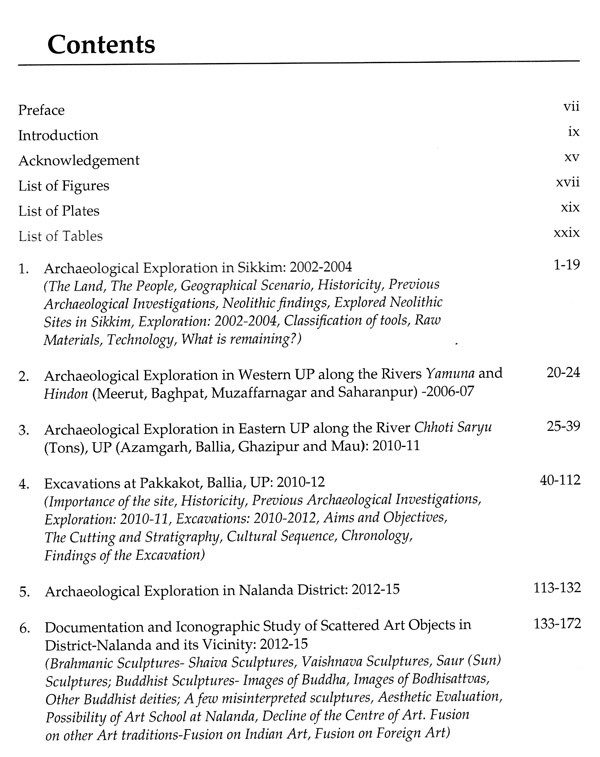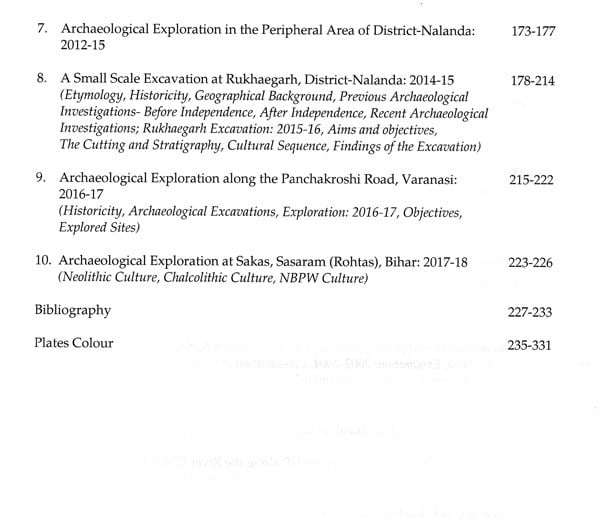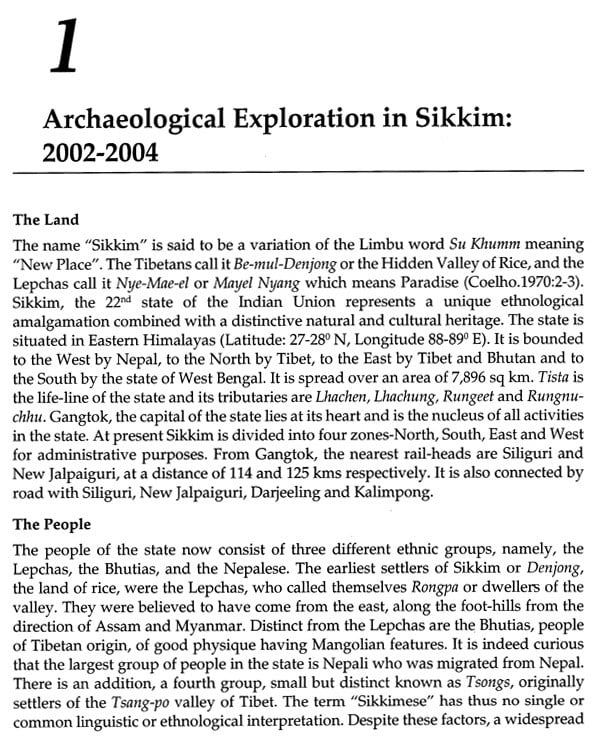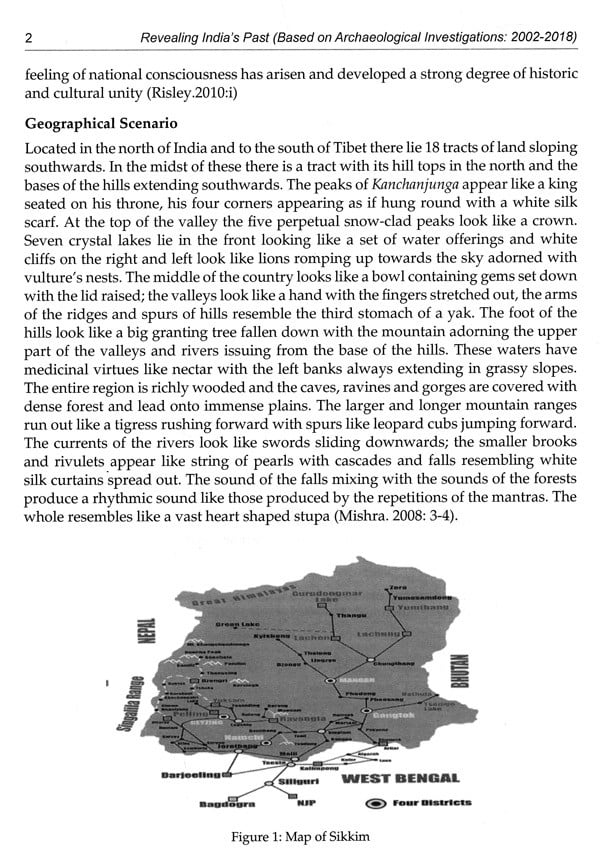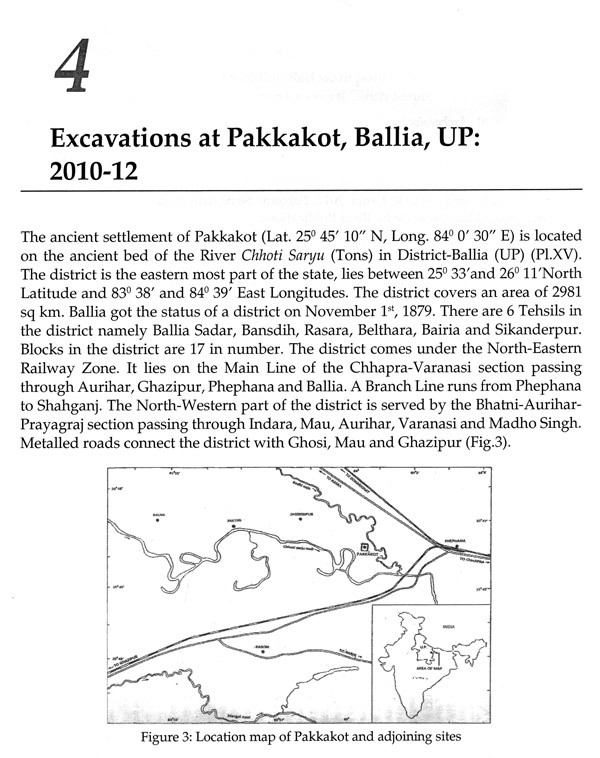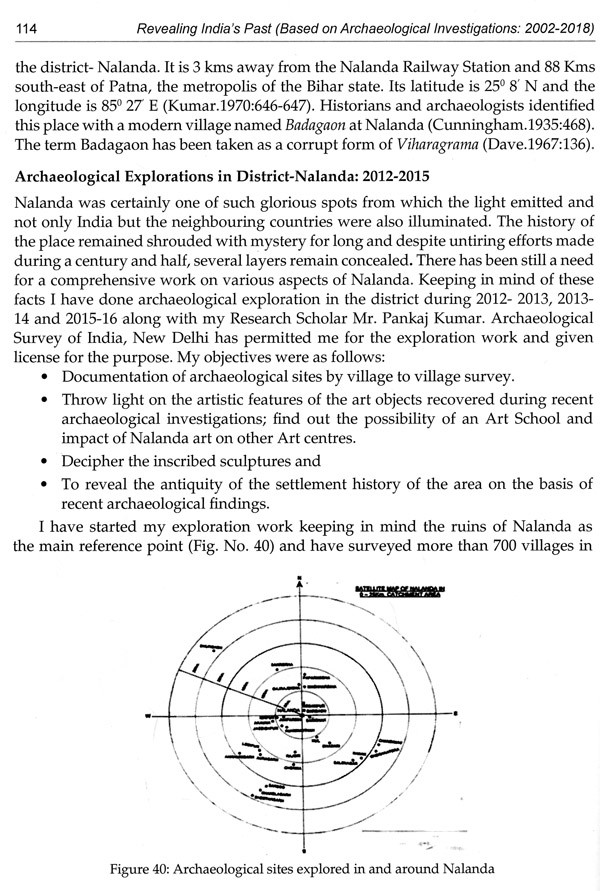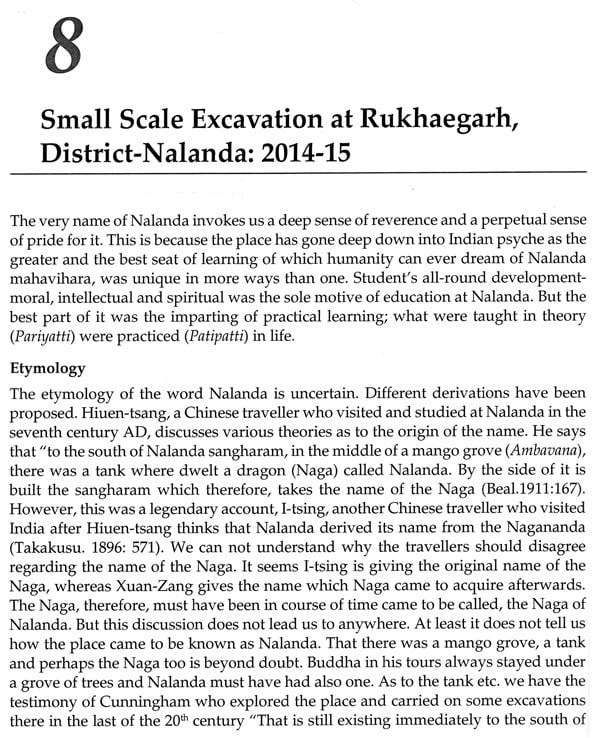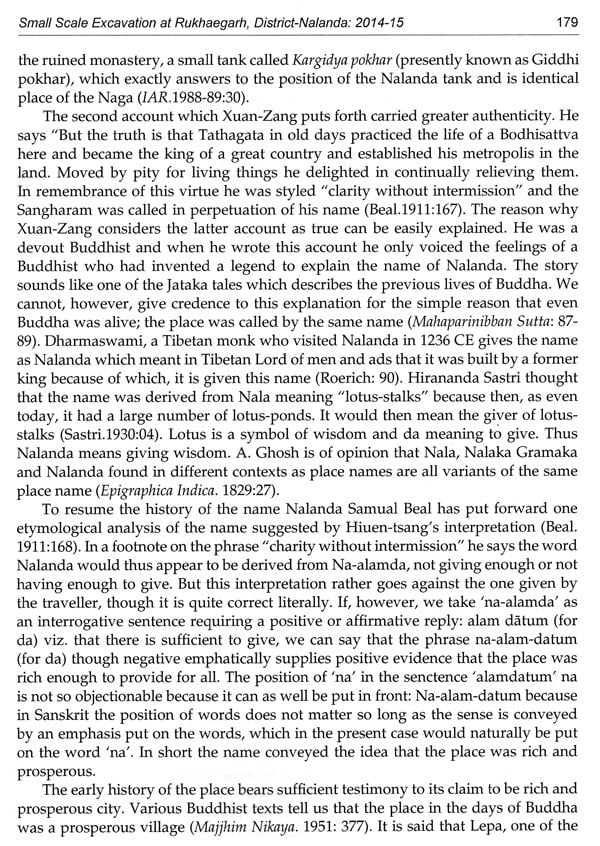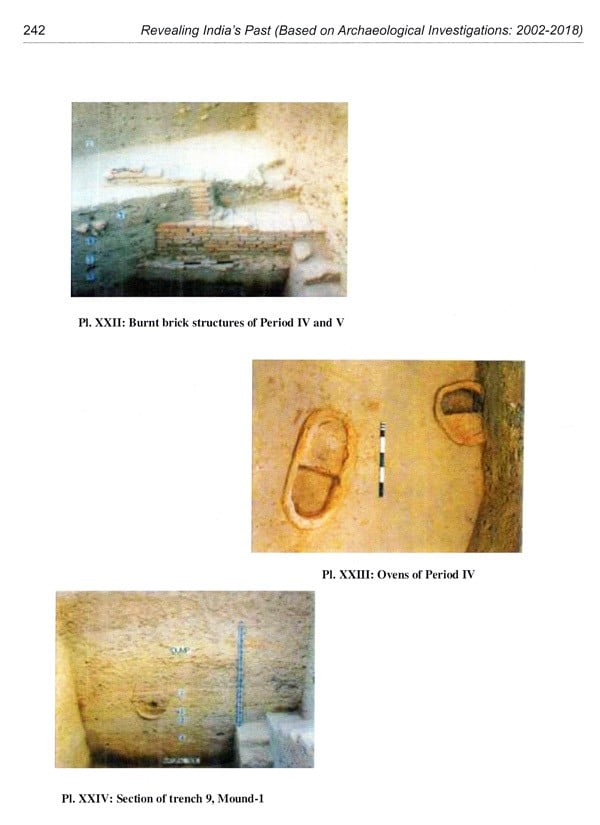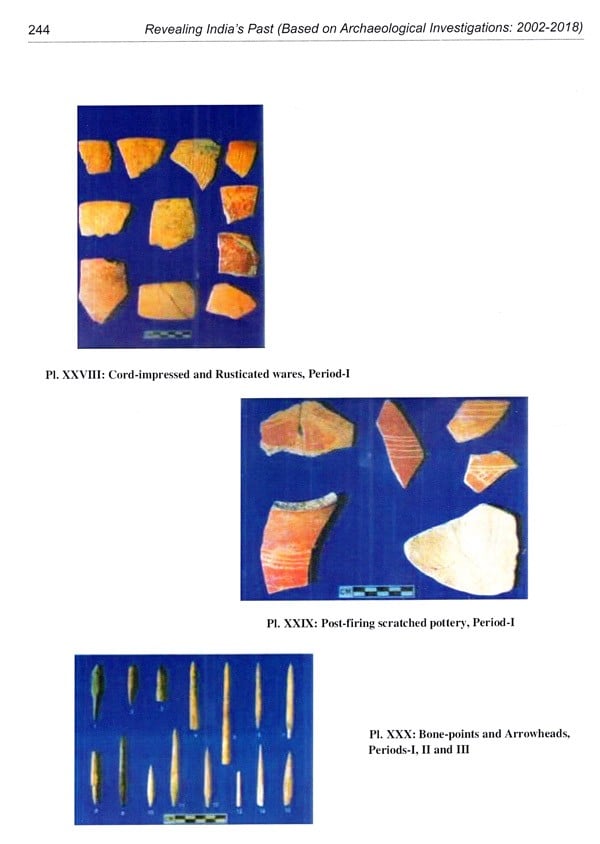
Revealing India's Past (Based on Archaeological Investigations, 2002-2018)
Book Specification
| Item Code: | AZB671 |
| Author: | G. K. Lama |
| Publisher: | Pathak Publisher and Distributors |
| Language: | English |
| Edition: | 2021 |
| ISBN: | 9788194891642 |
| Pages: | 331 (Throughout Color and B/W Illustrations) |
| Cover: | Hardcover |
| Other Details | 11 x 9 Inches |
| Weight | 1.30 kg |
Book Description
The book presents a scientific data of sixteen years of rigorous archaeological field work done in the states of Sikkim, Eastern and Western UP and Bihar by the author which not only throws light on the archaeological findings of those regions but also gives some new information in the field of Indian archaeology. It is not only well supported by maps, statistical data and illustrations but comparative studies are also shown in a number of tables. The book gives detailed information about the explored sites in the states of Sikkim, Eastern and Western UP and Bihar along with archaeological findings of the excavations done at Pakkakot in Eastern UP and Rukhaegarh, Bihar. The book covers a long span of time i.e. from Pre-history to early medieval times.
Dr. G. K. Lama, Professor, Department of AIHC & Archaeology, Centre of Advanced Study, Banaras Hindu University, Varanasi, having specialization in the field of Archaeology, Buddhism and South-East Asian Studies, has 13th books in his credit namely Tibet Men Bauddha Dharma Ka Itihas-2004; Samyak Darshan -2004; Cultural Heritage of South-East Asia-2009; Indus to Ganges-2009; Pakkakot: Some New Archaeological Dimensions of Mid-Ganga Plain-2012; Buddhist Cave Temples of Ancient India-2013; A Buddhist Universe-201 6; An Archaeological Journey of Nalanda-2018; Art Heritage of Nalanda-2018; India: A Journey from Lithic to Iron-2019; Footprints of the Buddha on the Roof of the World-2020; Glimpses of North-East India-2021 and Indian Culture through the Ages. He has presented 67 research papers in various National and International seminars and 99 research papers have been published in various reputed journals, edited books, conference proceedings and felicitation volumes. He has completed a Major Research Project entitled Archaeological Investigation in and around Nalanda, granted by the University Grants Commission, New Delhi, which was submitted in 2014. The author has also completed 16 projects regarding archaeological investigations in Sikkim, Eastern and Western UP and Bihar with the kind permission of Archaeological Survey of India, New Delhi. He has invited twice to Sri Lanka and once to Thailand to deliver special lectures.
In the field of archaeology attention was not made properly in the region of North-East India, especially in the state of Sikkim which became a part of India in 1975. Although a number of archaeological expeditions were done in eastern and western UP to reveal the shrouded mysteries of the region and fill up the cultural gaps, but still more work is needed to understand the archaeology of Ganga plain and the extension of Harappan culture. A lot of archaeological investigations were done in the state of Bihar, the ancient Magadha, which has a glorious past but still not only some areas are untouched but a cultural gap is noticed in those areas where archaeological investigations were carried out. For example, attention was made to the world famous Buddhist centre Nalanda and its peripheral area and the findings of recent excavations are pushing back the antiquity of the area. But still a village to village survey is needed for the documentation of the sites having archaeological importance and excavations on a broad level which will reveal not only the shrouded mysteries of the area but also help to fulfill the cultural gaps. A deep study is also needed on the artistic features of the region which will be helpful to establish Nalanda as a centre of art. A long gap is noticed after excavation of Chirand and Senuwar in the field of pre-history. Some more Neolithic sites should be discovered in the Vindhyan region. Varanasi is famous as a religious, historical and trade centre since time immemorial. Excavations at Sarnath, Rajghat, Aktha and Ramnagar were carried out by the ASI and Banaras Hindu University from time to time but documentation of archaeological sites in Varanasi region is still left.
So to solve the aforesaid problems the author has done explorations and excavations with his team from 2002-2018 and tried his best to fulfill all the gaps. Hence, this book is compiled which may answer a number of unsolved questions and add some new chapters in the archaeology of aforesaid regions. Although the author has actively participated as a team-member in a number of explorations and excavations conducted by his department, such as explorations along the River Gomati in district-Jaunpur, Eastern UP: 2005-06 and in the same area including Nindaur, Bhabhua, Bihar:2008-09 and excavations at Agiabir, district-Mirzapur, Eastern UP: 2006-07 and 2007-08; Sarepur, Eastern UP: 2008-09, but he had felt that he is not the authorized person to write on those expeditions. Brief report of these archaeological investigations had been already published in various volumes of the departmental journal Bharati.
After 16 years of rigorous archaeological field work in the states of Sikkim, eastern and western UP and Bihar the author has decided to compile them in a single book which not only throws light on the archaeologicxal findings of those regions but also added some new information in the Indian archaeology. During 2002-04 an exploration work was carried out in the state of Sikkim and a number of Neolithic sites were discovered. Special mention may be made of those Neolithic tools which are not reported from any other Neolithic site of India. These tools are similar to those tools which were recovered from Yunnan, a province of west China. An exploration work was done by the author and his team along the rivers Yamuna and Hindon in western UP. A village to village survey was done in District-Meerut, Baghpat, Muzaffarnagar and Saharanpur and a number of sites were discovered having archaeological importance. Findings of this region suggest that the spread of Harappan culture may not be limited up to Meerut but it may extend and cover more areas. There is a great desideratum to compare Black Painted Red Ware, which occurs in profusion in the explored sites, with already reported Harappan sites in neighboring area. During 2010-11author has explored a number of sites in eastern UP along the River Chhoti Saryu (Tons) in the districts of Azamgarh, Ballia, Ghazipur and Mau. Findings of this region enable to the archaeologists to understand the various cultures of this region. In 2010-11 exploration work was done at Pakkakot, Ballia, UP by the author and his team to understand the cultural sequence of the site because previously archaeologists have suggested that it is a NBPW or Chalcolithic site but having seen the findings of the site the team has observed that first settlers of the site were Nerolithic people.
After a number of explorations the author and his team has decided to excavate the site of Pakkakot which was carried out in two seasons i.e 2010-11 and 2011-12 and the findings has proved the site as a Neolithis settlement. A five fold cultural sequence was noticed at the site without any break in between them: Neolithic, Chalcolithic, NBPW, Sunga-Kushan and Gupta and Post Gupta. Pakkakot lies on the ancient trade route from Pataliputra to Lumbini via Masarh>Buxur>Tika Deori>Khairadih>Sohgaura>Kopia>Kapilvastu and Lumbini. A careful analysis of the ceramic assemblage and other artifactual data of Pakkakot show the transition from rural to urban settlement at the site. The cultural relics obtained from the site are ascribable from Neolithic culture to Gupta and post-Gupta period (5000 BCE-700 CE). We have recovered one sealing of baked clay of Period-V having the legends "Chetak Vihare" and "Matibharadhikaranasya" from Mound-4. To find out Buddhist site in surrounding area the team has explored neighbouring area and found a site named "Matahi" which is located about 2 kms west from the site. The name Matahi is well comparable with Matibhar. This site has a profile of a religious monument. A female figurine made of silver is a rare discovery of this site which was recovered from the pre-Mauryan level. This type of figurine is not reported from any site of Ganga plain. Although Ghosh has reported about a golden figure recovered from Laurianandangarh (Bihar) in his book An Encyclopaedia of Indian Archaeology but its photograph is not published and its present status is not known. About half dozen sealings found from the site have more than five impressions which are also not reported from any site of Ganga plain. Some of them show the antiquity of the name Ram and Gopal in 2nd century BCE. Any archaeological evidence is not yet available to prove the antiquity of both gods in Sunga period. Special mention may be made of two pendants, one is tortoise made of banded agate and other is a parrot made of crystal found from the NBPW level.
Nalanda was certainly one of such glorious spots from which the light emitted and not only India but the neighbouring countries were also illuminated. The history of the place remained shrouded with mystery for long and despite untiring efforts made during a century and half, several layers remain concealed. There has been still a need for a comprehensive work on various aspects of Nalanda. Keeping in mind of these facts I have done archaeological exploration in the district during 2012- 2013, 2013-14 and 2015-16 along with my Research Scholar Mr. Pankaj Kumar. Archaeological Survey of India, New Delhi has permitted me for the exploration work and given license for the purpose. During exploration 68 sites were found having archaeological importance. Findings of these sites proved that the antiquity of the region may go back up to Chalcolithic period. It was proved by the excavations carried out at Ghorakatora and Juafardih where from remains of Chalcolithic culture was recovered. A few Palaeolithic tools were also recovered during exploration from Banganga valley. Excavations on broad label will be able to reveal the shrouded mystry of the region and may be able to fulfill the cultural gap.
During exploration done by the author during 2012-15, he found hundreds of sculptures scattered on various sites unprotected and unpreserved. He had seen more than 50 inscribed Brahmanic and Buddhist Sculptures. The author had taken help from Prof. Arvind Kumar Singh, Jiwaji University, Gwalior and Prof. Suman Jain of his own department to decipher these inscriptions. Most of the Buddhist sculptures are inscribed with famous Buddhist creed-"Ye Dhamma Hetuppabhava...." It is noted that the number of Brahmanic sculptures is not less than Buddhist sculptures. It is also observed that these Brahmanic sculptures belong to Shaiva, Vaishnava and Saur (Sun) cult. Hence, the purpose of the author is to attract attention of the Art Historians and Archaeologists to find out the possibility of establishing Nalanda School of Art. On the basis of the iconographical study if we analyze the possibility of Nalanda School of art then we come at a conclusion that it was a continuous process of centuries which was developed in a broad area including other local art styles. Art objects since Gupta to Pala-Sena period were recovered from Nalanda. Sculptors made Buddhist images in stucco, stone and bronze and also expressed their art skills in paintings since 6th century to 12th century CE. Although Nalanda School imbibed inspiration from Sarnath School of Art, but it could not maintain the classical grace and beauty for years. If the sculptures of Nalanda dated 6th-8th century CE are carefully examined, it is easily noticed that the classical grace evaporated and a meaningless and drowsy heaviness characterize the sculptures produced in this time bracket. The quantity of images recovered from the region till date proves that there must be a centre of art in this place. Now the question arises that is the manufacturing of images in the region was only the contribution of Pala emperors? Because the art developed at Nalanda and its vicinity is named as Pala School of Art but making of sculptures was prevalent in the region before Palas. Although the number of Gupta images at Nalanda is less in comparison to Pala period. In this way we can say that Nalanda was developed as a centre of Art since Gupta period. Sankalia also supported this theory and told that during Gupta period Nalanda became a centre of sculpture making. Local sculptors of Nalanda adopted the special characteristics of the art schools of pre-Mauryan, Greeko-Bactrian, Persian, Mathura, Amaravati and other art schools and produced a number of Buddhist images under a new art style which was different from the earlier art styles. It was done during Gupta period because without a regular centre of art it is impossible to recover such a huge number of images from the region. Making of sculptures was done here at local level because it is impossible to impoprt images in such a huge quantity. Local sculptors have given a new dimension to the Nalanda art under the skillfull direction of Dhiman and Bitapal. The facts analyzed above shows that a centre of art was already developed and images were made without any interruption at Nalanda long before the Palas so it is useless to connect it with Pala School of Art. So it is a narrow minded thought to link up it with a dynasty. As Sarnath, Mathura, Gandhara art schools were named after their birthplace so that the art form which was developed at Nalanda and was given a different form must be known as "Nalanda School of Art".
**Contents and Sample Pages**
